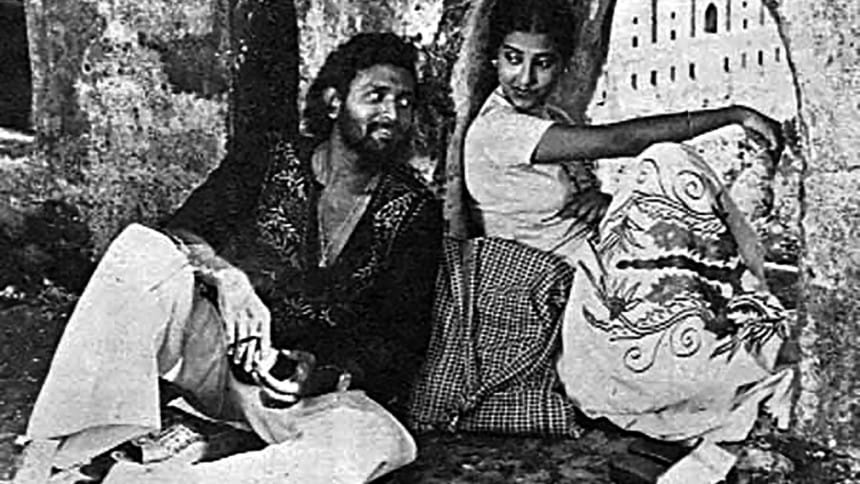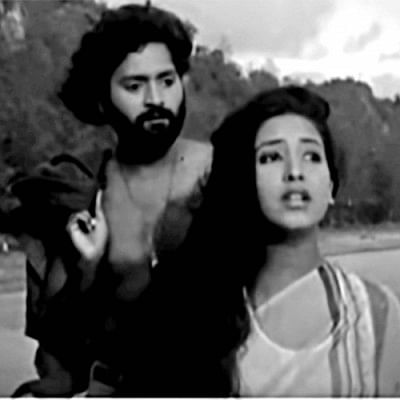40 Years of Ghuddi: Rereading the film and its enduring influences

After the First World War, Major Arthur Hurst filmed shell-shocked patients who returned from the war in France. War Neurosis (1917) pioneered as the first medical film about the treatment of psychiatric battle casualties. In the context of Bangladesh, the Liberation War of 1971 has been addressed in a number of films, but no film portrayed the post-war symptoms of existential crisis as prominently and artistically as Ghuddi. Decades after its release, the critically acclaimed 1980 film remains a masterpiece of Bangladeshi alternative cinema. The path of film experimentation that was paved by predecessors like Zahir Raihan, Amzad Hossain, Alamgir Kabir and Syed Salauddin Zaki – added a sharp curb to the genre.

Although wrapped in a romantic frame, the film essentially captures the emotional nuances of post-war urban youth, offering a number of anecdotal elements for further research. Questioning the grand narrative of the Liberation War, it searches for the untold 'truth' of what would be called history. The audience wonders, "Is the protagonist who hides behind a faux name Mohabbat Ali an anomaly or a representation of the young state itself? It may not be too farfetched to draw a parallel between the two. A newly formed country and a young man in his late twenties – the common thread binding the two offers a state of confusion. In fact, the characters, Asad, Farid Ali, Tariq, Bacchu are real freedom fighters, and fall on the same cluster as that of Mohabbat Ali. Ironically, the youth of today may find themselves in the same loop of dilemma.
The two main female characters, Ghuddi (Suborna Mustafa) and Nupur (Nayla Azad Nupur), project opposite characteristics. While Nupur detests the city that has taken away her beloved in the war, Ghuddi's romantic beliefs remain intact due to her ignorance. Subtly, she refers to the war time as 'gondogol' or unrest, which relates her to the bunch that often termed the Liberation War as a mere civil turmoil.
Although there is a debate about the commencement of the Independent Film Movement in Bangladesh, the era in which Ghuddi brought about changes was already blowing in the wind. The film is credited for its well-crafted dialogues, conveying sociopolitical critiques and sharp commentary on the contemporary film industry. The dual meanings of the colloquial dialect of Dhaka give the film a necessary local essence of expressing rage, in a rather comic tone. The classic bell bottom pants and sophisticated looks of the characters lets the audience reimagine their beloved city through a timescape.
The film attains its modern look, perhaps in an attempt to capture the playfulness of the French New Wave concepts. The jump cuts, the handheld shots, the iconic location shooting, improvised screenplay used in the film can be considered sporadic representations of the concepts. Other techniques, like breaking the fourth wall, can be credited to a more theatrical approach, rather than a cinematic one. While the outdoor soliloquies give the film a light and natural look, the same characters took a stage format as they moved indoors. For instance, the group conversation at Ghuddi's house reminds one of a theatrical play, including the scene blocking and the light dimming at the end of the scene. This approach, however, feels necessary to justify the heavy dialogues between Tariq and Mr Hasan. This amalgamation of techniques and dialogues contexualises the storyline, while the addition of Pablo Picasso's Guernica, known for its moving and powerful anti-war paintings, on the wall, highlights the comparisons and contrasts between the characters.
Nine years after the independence of the country, Syed Salauddin Zaki set out to make a film with a script adapted from Selim Al Deen's Chorkakra. The script was stolen, allegedly with an intention. The director, adamant to go by his shooting dates, improvised the entire script and dialogues on the spot, which resulted in Ghuddi. This spontaneity, however, was possible because of the team's enthusiasm and familiarity. The actors were from Dhaka Theatre, while the director, cinematographer and editor were film graduates from Pune. Ghuddi is a textbook example of a well-coordinated team, that worked wonders, despite their limitations.
The film is reserved in high definition format in the national archives as well as on YouTube channel of G Series. Ghuddi had close to no impact in the box office upon its release, but over time, it seems to have gained the status of a 'modern' vintage film, with timeless music by Lucky and Happy Akhand. The film's accolades for Best Dialogue and Best Cinematography at the National Film Awards further establishes its influence. As we prepare to celebrate the golden jubilee of Bangladesh's independence next year and forty years of Ghuddi in December this year, the film that indicated precursors of alternative cinema, remains one of a kind.

 For all latest news, follow The Daily Star's Google News channel.
For all latest news, follow The Daily Star's Google News channel. 



Comments